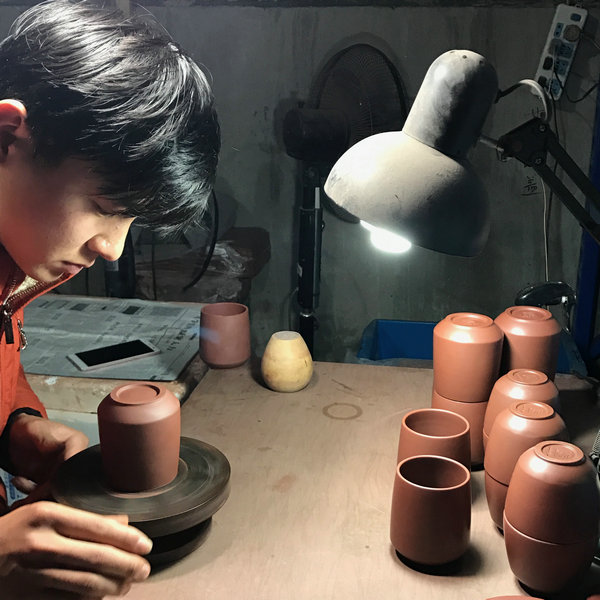 |
|
A Chinese craftsman works on Christopher Jenner's ceramic designs in Yixing, Jiangsu province. [Photo provided to chinadaily.com.cn] |
Q: How many times did you go to Yixing? How did you find the city?
A: I traveled to Yixing six times through the project. This is a big commitment for a small studio like ours but we realize the importance of showing our face and engaging directly with our partners.
Yixing is considered a "town" in China and even with a population of 1.3 million people, everything is in a state of flux, change is everywhere and the development is impressive. Nothing could have prepared me for the sheer scale of the ceramics industry in Yixing - there are literally thousands of people involved in the manufacture of these beautiful pieces.
Q: In an interview with Interior Design in September 2017, you mentioned that products need more human perspective. How did you apply this idea in your Yixing ceramic designs?
A: By this I mean consumers need to make a bigger investment into products that are handmade, products that have an element of craft and culture. This was the point of our project with Yixing - how could we take what is essentially a traditional craft and position it for the global consumer, creating and producing products that carry a deeper meaning and are a reflection of culture?
Q: It is said that you are "an expert at using technology and branding to make what's old feel new again". How did you make the old Chinese ceramic wares look new? What technologies did you use in the design?
A: Yes this is true, the idea behind this statement is that to ensure the continued existence of many traditional crafts it's essential the techniques behind them also change … this can be achieved through the use of computer software, where a new dynamic illustration of a design is possible, or the use of 3D printing, where one can create a physical representation of a concept well ahead of physically making something. New techniques like laser cutting, etching and computer numerical control (CNC) also allow us to re-imagine the potential of these crafts.
From a branding perspective it's important to understand that consumers are less interested in products than in brands - 'people buy brands not products'- so from this perspective it's essential that you approach a project like this as though you're developing a brand. Therefore storytelling, positioning and propositions become very important in the delivery of a project of this nature.